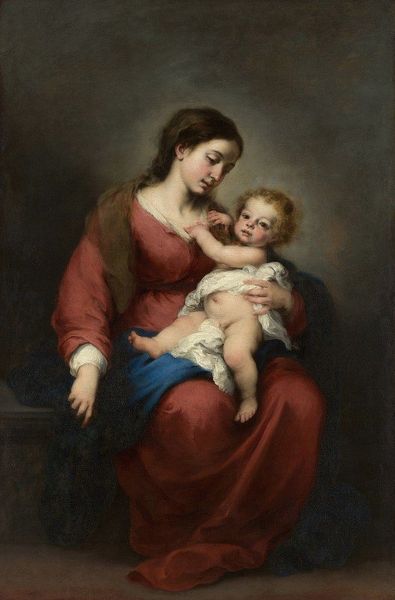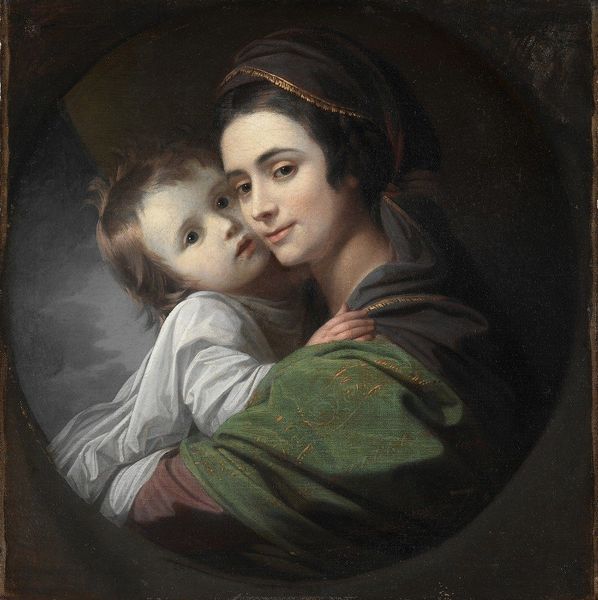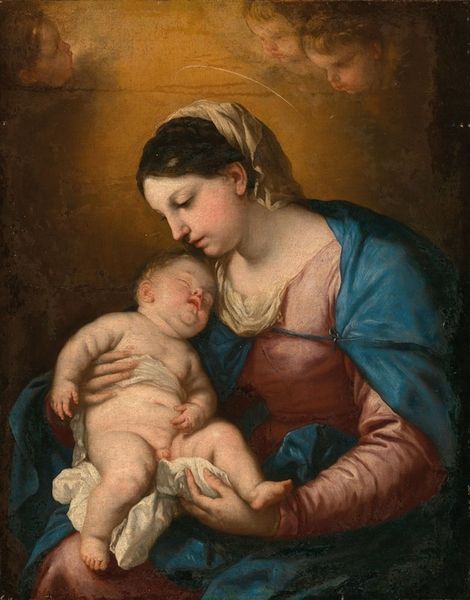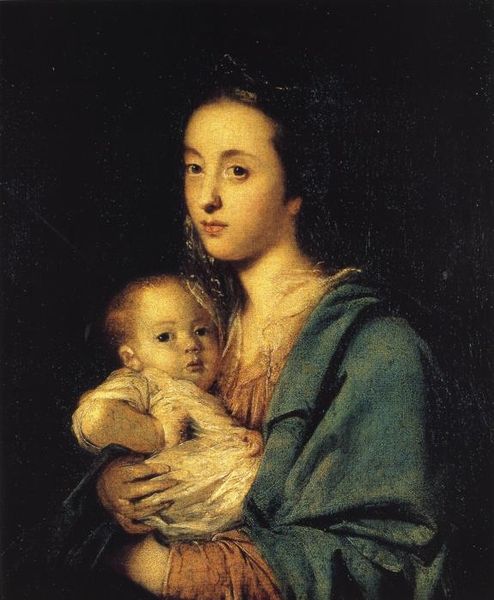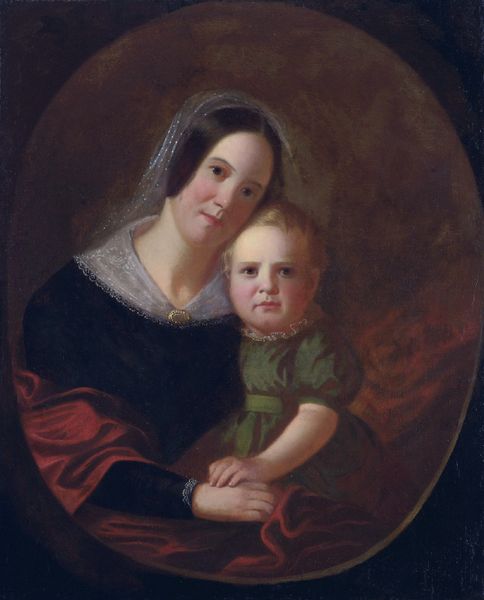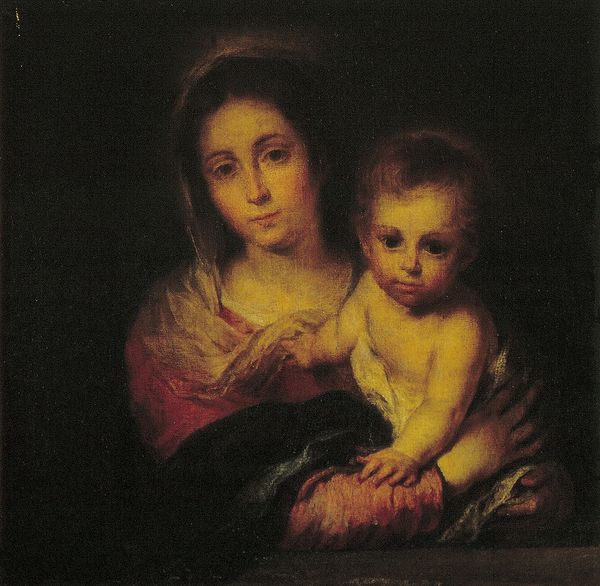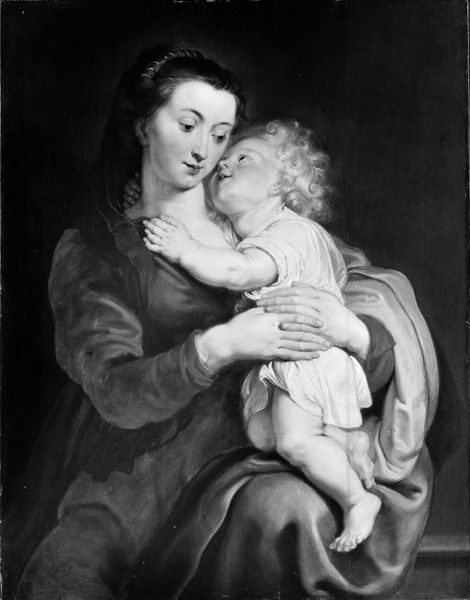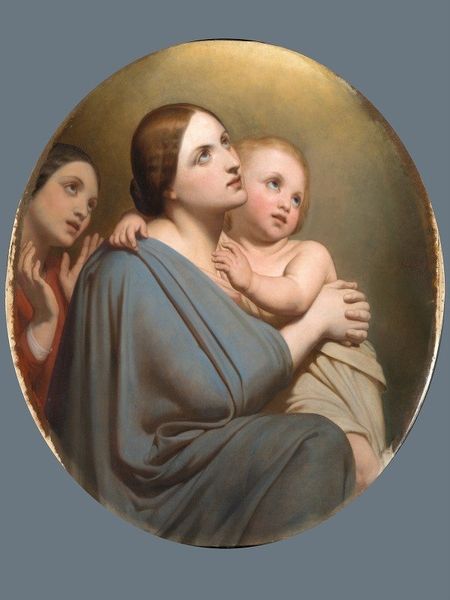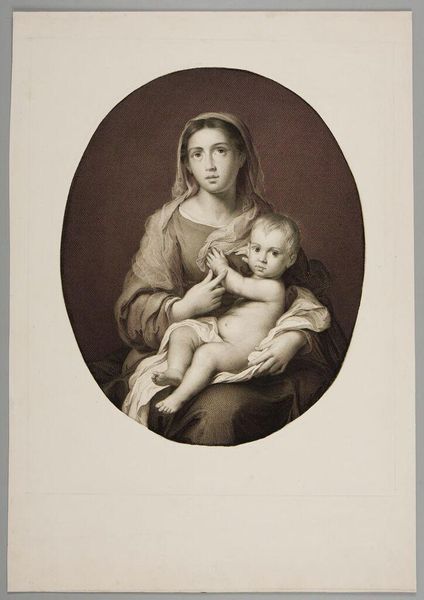
Dimensions: 76.2 x 61.6 cm
Copyright: Public domain
Curator: We’re looking at “Mrs. Benjamin West and Her Son Raphael,” a painting made in 1767 by Benjamin West, likely oil on canvas. It’s currently in a private collection. Editor: My immediate reaction is how classical the composition is—it feels almost like a Madonna and Child, yet grounded in this very earthly materiality. Curator: Indeed. West was consciously elevating his family to this level of historical and almost religious importance. Notice how he’s situated them within the tradition of grand manner portraiture, a style favored by the elite and meant to convey dignity, status, and refinement. Editor: And yet, there’s a compelling focus on the textiles: the way the light catches the folds of her headscarf, the swaddling cloth around the child. You can almost feel the texture of the materials themselves, a testament to the artist’s craft and, dare I say, Mrs. West’s role in acquiring and caring for these possessions. Curator: Precisely. Consider also West's position within the art world at this time. As a co-founder of the Royal Academy, he was instrumental in shaping the public perception and instruction of art in Britain. Paintings like these solidified his reputation, shaping ideals of motherhood and family within a broader cultural context. Editor: Right, and let’s not forget the material implications of that status. Pigments, canvas, the very act of commissioning a portrait like this—these speak volumes about the social stratification and consumption of art in the 18th century. Was West consciously reflecting this material reality? Curator: I think West, like many artists of his time, was interested in constructing narratives that were both aesthetically pleasing and socially resonant. This portrait certainly romanticizes motherhood, but it also functions as a historical document, showcasing the West family's position and taste within the burgeoning British empire. Editor: It's a delicate balance, isn't it? To imbue everyday subjects with classical weight while simultaneously reminding us of the tangible, earthly elements that underpin such representations. You get a feeling about how those cloths looked. Curator: Absolutely. By bridging the personal and the historical, the ordinary and the ideal, this portrait continues to fascinate and prompt new questions. Editor: Yes, it encourages a multilayered investigation into a formative period of material culture, challenging simplistic labels of both the "historical" and the "domestic."
Comments
No comments
Be the first to comment and join the conversation on the ultimate creative platform.
